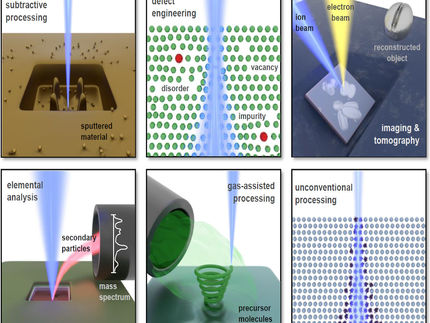Scientists use artificial neural networks to predict new stable materials
Advertisement
Artificial neural networks--algorithms inspired by connections in the brain--have "learned" to perform a variety of tasks, from pedestrian detection in self-driving cars, to analyzing medical images, to translating languages. Now, researchers at the University of California San Diego are training artificial neural networks to predict new stable materials.

Schematic of an artificial neural network predicting a stable garnet crystal prototype.
Weike Ye
"Predicting the stability of materials is a central problem in materials science, physics and chemistry," said senior author Shyue Ping Ong, a nanoengineering professor at the UC San Diego Jacobs School of Engineering. "On one hand, you have traditional chemical intuition such as Linus Pauling's five rules that describe stability for crystals in terms of the radii and packing of ions. On the other, you have expensive quantum mechanical computations to calculate the energy gained from forming a crystal that have to be done on supercomputers. What we have done is to use artificial neural networks to bridge these two worlds."
By training artificial neural networks to predict a crystal's formation energy using just two inputs--electronegativity and ionic radius of the constituent atoms--Ong and his team at the Materials Virtual Lab have developed models that can identify stable materials in two classes of crystals known as garnets and perovskites. These models are up to 10 times more accurate than previous machine learning models and are fast enough to efficiently screen thousands of materials in a matter of hours on a laptop. The team details the work in a paper published Sept. 18 in Nature Communications.
"Garnets and perovskites are used in LED lights, rechargeable lithium-ion batteries, and solar cells. These neural networks have the potential to greatly accelerate the discovery of new materials for these and other important applications," noted first author Weike Ye, a chemistry Ph.D. student in Ong's Materials Virtual Lab.
Most read news
Other news from the department science

Get the chemical industry in your inbox
By submitting this form you agree that LUMITOS AG will send you the newsletter(s) selected above by email. Your data will not be passed on to third parties. Your data will be stored and processed in accordance with our data protection regulations. LUMITOS may contact you by email for the purpose of advertising or market and opinion surveys. You can revoke your consent at any time without giving reasons to LUMITOS AG, Ernst-Augustin-Str. 2, 12489 Berlin, Germany or by e-mail at revoke@lumitos.com with effect for the future. In addition, each email contains a link to unsubscribe from the corresponding newsletter.






























































